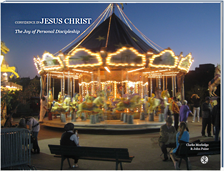When it comes to researching the Bible, people often call me a geek. And they’re right. I have little patience for flipping through tomes and trying to remember where I read something. Give me a multi-tabbed Internet browser and an electronically searchable document every time. For casual research (on the couch or Barcalounger) an iPad does the trick nicely, thank you. The guys at Google should be knighted or something for their contributions to society. Put the inventors of the Kindle Reader app right behind. Gotta love Amazon theology for instantly accessible books. Have trouble remembering things? Try Evernote. Bible study has never been so accessible, easy and convenient.
But things evolve rapidly in cyberspace.You can get used to a favorite tool, and miss out on something even better. Likewise, you can try one that is in an early stage of gestation, be unimpressed, and fail to see improvements that are rolled out later on. So it is with Bible reference sites.
For years, I enjoyed using a popular Bible search tool that eventually became thick with advertisements. It failed to keep up with modern resources, instead offering 19th-century commentaries that rarely satisfied. Friends recommended the Blue Letter Bible site and app to me a couple of years ago, but I just didn’t like the interface.
Things change.
My go-to searching tool for Bible study has become the Blue Letter Bible. It has a very convenient and well-thought-out interface that connects resources in a powerful way. Aesthetically it’s a bit like looking at the guts of an engine, but once you get used to it, you’ll have tremendous power at your fingertips. For those who copy and paste Scripture into documents and would like to avoid having to manually remove each verse number and then type the citation after you paste, Blue Letter Bible’s copy and paste options are amazingly flexible and powerful. Seems like a simple thing, but that’s what brought me back to retry the Blue Letter Bible.
Wow, have they delivered a lot of smart features! But don’t take my word for it. Watch this five-minute video tour then try it out for yourself. Enjoy!


